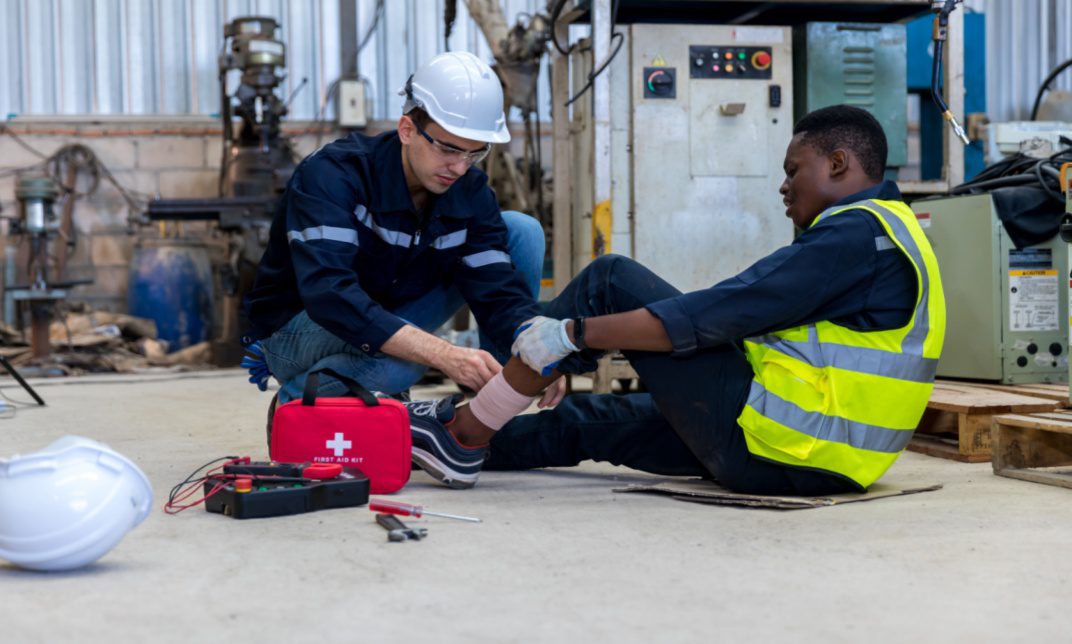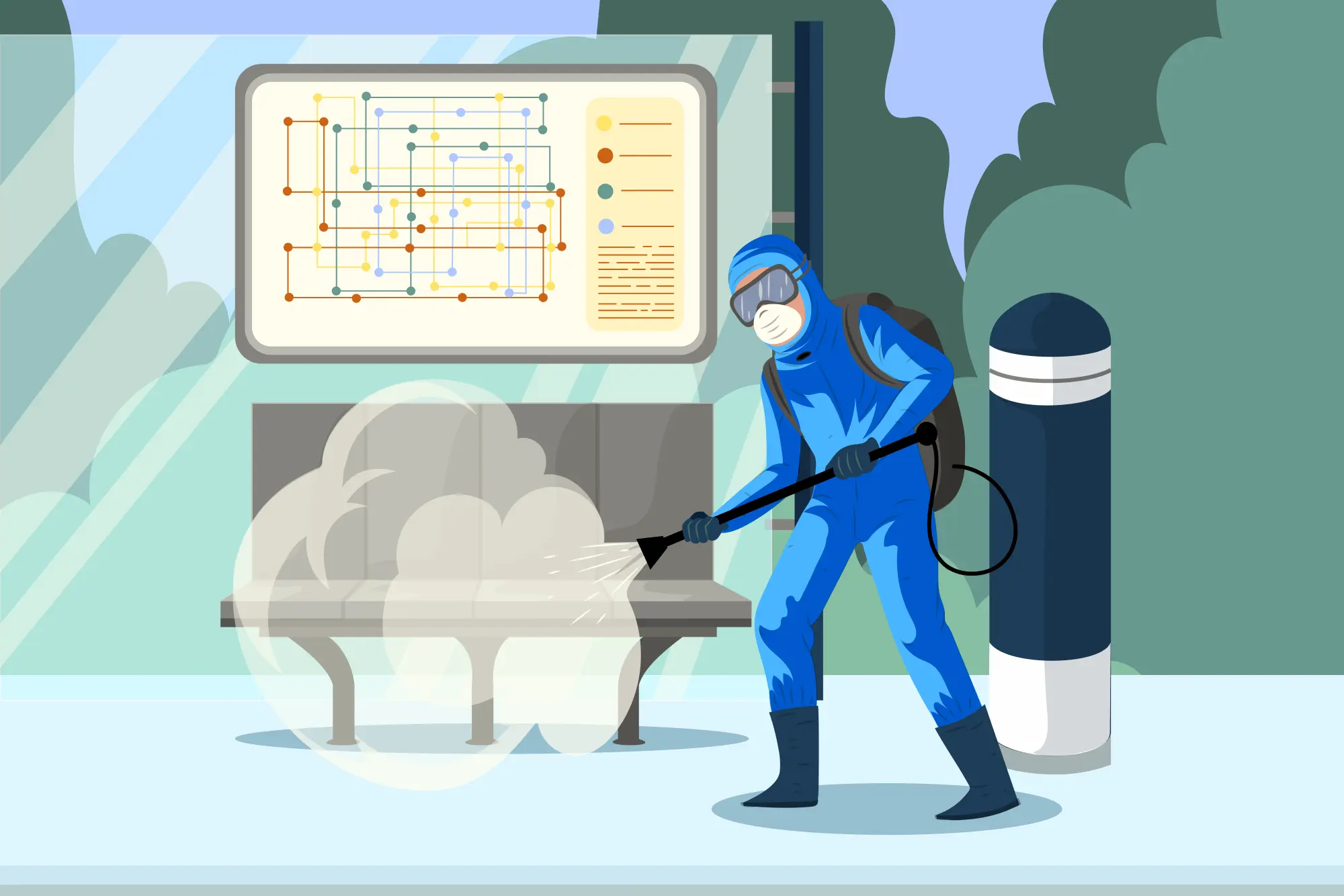No products in the basket.
According to the Health and Safety Executive (HSE), in Great Britain, 561,000 workers were victims of non-fatal injuries at the workplace, and 135 workers died in the years 2022/23. Therefore, ensuring health and safety in the workplace is a legal and moral obligation. It’s about protecting the well-being of employees and creating a productive and positive work environment.
So, who exactly is responsible for health and safety in the workplace? The answer is multifaceted, involving employers, employees, and government agencies. Thus, this blog will explore all the roles and responsibilities of each party.
What is Workplace Health and Safety
Workplace health and safety refers to the practices and policies that are implemented to ensure the physical and mental well-being of employees. This includes everything from preventing accidents and injuries to promoting mental health and wellness. The importance of workplace safety cannot be overstated; it not only safeguards workers but also increases productivity, reduces costs related to workplace injuries, and promotes a positive organisational culture.

The Role of Government Agencies
Government agencies play a significant role in regulating and enforcing workplace safety standards. Here are the two most important ones:
OSHA (Occupational Safety and Health Administration)
In the United States, OSHA sets and enforces standards to ensure safe and healthy working conditions. They also provide training, outreach, education, and assistance.
HSE (Health and Safety Executive)
In the UK, the HSE is responsible for the regulation and enforcement of workplace health and safety. They also conduct research and provide guidance on best practices.
Who is Responsible for Health and Safety in the Workplace?
Securing health and safety in the workplace is a collective responsibility that involves multiple stakeholders. While the primary responsibility often falls on employers, everyone within the organisation, from management to employees, plays a crucial role in maintaining a safe working environment. Moreover, protecting employees, guests, and customers should be a top priority in every workplace.
Responsibilities of Employees in Health and Safety
Employers play a significant role in maintaining health and safety at work. Moreover, their duties are legal and ethical. Here’s a summary of key responsibilities:
- Providing a Safe Workplace: This includes maintaining a work environment free from recognised hazards. This could involve ensuring proper building maintenance, having functioning safety equipment, and implementing safe work practices.
- Risk Assessment and Control: Employers must identify potential hazards in the workplace. Once identified, they need to assess the risks and take steps to eliminate or minimise them. This might involve implementing control measures like using personal protective equipment (PPE) or establishing safe work procedures.
- Training and Information: Employees cannot be expected to work safely if they are unaware of the risks involved. Employers are obligated to provide necessary training on health and safety protocols specific to the job. This should include information on hazard identification, safe work procedures, and emergency response plans.
- Maintaining Safe Equipment and Machinery: Employers are responsible for ensuring all equipment and machinery used by employees is safe and well-maintained. This includes following the manufacturer’s recommendations for inspections and maintenance schedules.
- Emergency Preparedness: Every workplace should have a plan in place to handle emergencies. Therefore, employers need to develop and communicate emergency procedures to all employees. This might involve fire drills, evacuation procedures, and first-aid protocols.
- Employee Consultation: Effective health and safety programmes involve open communication and employee participation. Moreover, employers should consult with employees on safety matters and consider their input when developing and implementing safety protocols.
- Reporting and Recording Incidents: Employers must report serious incidents and maintain accurate records as per the Reporting of Injuries, Diseases, and Dangerous Occurrences Regulations 2013 (RIDDOR).
- Mental Health and Well-Being: Mental health and well-being are two of the most underrated aspects of a workplace, but they have a great impact on the employee’s working efficiency. Employers should promote mental health by providing resources and support to address work-related stress and psychological hazards.
Employee’s Health and Safety Responsibilities
While employers shoulder the primary responsibility for workplace safety, employees also play a crucial role in creating a safe and healthy work environment. Some of the key employee responsibilities include:
- Taking Care of Yourself: This includes being aware of your own health limitations and avoiding actions that could put yourself at risk. It also means reporting any pre-existing conditions that might affect your ability to perform tasks safely.
- Following Safety Procedures: Employers establish safety protocols for a reason. Employees must actively participate in safety training, understand and follow established procedures, and use personal protective equipment (PPE) as directed.
- Cooperation and Communication: Employees are expected to cooperate with their employer’s health and safety efforts. This includes reporting hazards, unsafe work conditions, or near misses. Open communication about safety concerns is vital.
- Safe Work Practices: Always prioritise safety in your daily tasks. This means avoiding shortcuts, using equipment properly, and maintaining a clean and organised work area.
- Awareness and Reporting: Be observant of your surroundings and report any potential hazards you encounter, such as spills, damaged equipment, or unsafe work practices by colleagues.
Technology and Workplace Safety
Technology has brought about numerous innovations in workplace safety, making it easier to identify and reduce risks.
Wearable devices can monitor workers’ health and environmental conditions in real time, providing valuable data to prevent accidents and health issues. Moreover, safety apps can offer real-time information, alerts, and guidelines to help employees stay safe. They can also facilitate reporting hazards and incidents quickly.
Furthermore, data analytics can help identify trends and patterns in safety incidents, allowing organisations to address underlying issues and improve their safety measures.
Final Thoughts
Workplace health and safety is a collective responsibility that includes employers, employees, government agencies, and other stakeholders. Moreover, each party plays a vital role in building a safer and more productive work environment by understanding and fulfilling their duties.
Furthermore, you can visit Training Tale and enrol in our Level 1 Health and Safety in a Construction Environment Course to gain invaluable knowledge about health and safety in the workplace. Thus, you can be an expert in this field and manage all the safety procedures. Also, we are available 24/7 if you face any issues.





